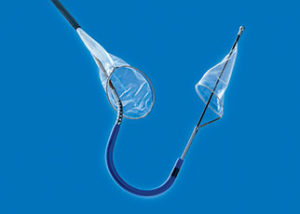
Claret Medical has received regulatory clearance from the FDA for its Sentinel cerebral protection system, via de novo classification, meaning that the device can now be marketed in the USA. It also means that Sentinel is the first such device to become available in the USA. Sentinel is designed to be used during transcatheter aortic valve implantation (TAVI) procedures to reduce the risk of stroke by capturing and removing debris dislodged by such procedures before it reaches the brain.
A press release reports that Claret Medical will launch the device in selected high-volume TAVI centres of excellence across the USA. It adds that the company is also collaborating with the Centers for Medicare and Medicaid Services (CMS) to develop a pathway to achieve a new technology add-on payment and has already established an ICD code for reimbursement of the Sentinel.
In clinical studies, according to the press release, the Sentinel removed visible debris headed towards the brain in 99% of TAVI cases, regardless of the type of replacement valve used, and with no added risk. Furthermore, it is associated with 99% deployment success in a median deployment time of four minutes. It is securely positioned away from the aortic arch—avoiding damage to that anatomy, minimising interference with TAVI catheters. Additionally, in the SENTINEL randomised controlled trial, the use of Sentinel reduced strokes by 63% in the first 72 hours after TAVI and maintained a substantial difference at 90 days.
Martin Leon (Columbia University Medical Center/New York-Presbyterian Hospital, New York, USA, chair of the SENTINEL trial clinical steering committee, says: “Strokes are devastating; they are random and unpredictable, and they are one of the biggest fears of any TAVI patient and their treating physician. Anything we can do as clinicians to reduce the risk of brain injury is extremely meaningful. The 63% reduction in clinical strokes in the first 72 hours after TAVI, combined with the fact that one in four patients had an average of 25 particles of debris collected that were visible to the naked eye, is striking. The device was delivered safely, added minimal time to the procedure, and performed as intended with capture of embolic material and reduction in ischemic brain injury.”













